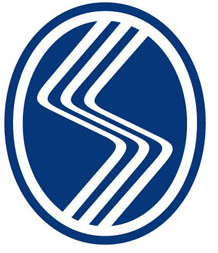Açık Akademik Arşiv Sistemi
Eco-Friendly Bleaching of Cotton Fabrics Without Heating Using Direct Process Water in the Presence of Sodium Chlorite and Phosphonate
JavaScript is disabled for your browser. Some features of this site may not work without it.
| dc.contributor.authors | Dursun, Sami; Yildiz, Salih Z. | |
| dc.date.accessioned | 2023-01-24T12:08:39Z | |
| dc.date.available | 2023-01-24T12:08:39Z | |
| dc.identifier.issn | 1544-0478 | |
| dc.identifier.uri | http://dx.doi.org/10.1080/15440478.2022.2146248 | |
| dc.identifier.uri | https://hdl.handle.net/20.500.12619/99516 | |
| dc.description | Bu yayın 06.11.1981 tarihli ve 17506 sayılı Resmî Gazete’de yayımlanan 2547 sayılı Yükseköğretim Kanunu’nun 4/c, 12/c, 42/c ve 42/d maddelerine dayalı 12/12/2019 tarih, 543 sayılı ve 05 numaralı Üniversite Senato Kararı ile hazırlanan Sakarya Üniversitesi Açık Bilim ve Açık Akademik Arşiv Yönergesi gereğince telif haklarına uygun olan nüsha açık akademik arşiv sistemine açık erişim olarak yüklenmiştir. | |
| dc.description.abstract | A large amount of chemicals, water and energy are used during the bleaching of raw cotton fabrics. For this reason, it is extremely important for economic and ecological aspect to develop eco-friendlier bleaching technology that eliminates the need for heat energy, process water, and wetting agent in the bleaching of these fabrics. Here, we report on green approach for industrial-scale bleaching with sodium chlorite (NaClO2) in presence of phosphonates (HEDP), which is used as both wetting agent and pH regulator and contributes to the high whiteness of fabrics. In bleaching, the process water was used in ambiant temperature as flote without any heating process, thus reducing the energy requirement significantly. In the measurements, it was observed that the whiteness value (W.I. = 72.6) obtained after 8.0 h bleaching at 20 degrees C which was very close to the whiteness value (W.I. = 74.2) of reference W-1 fabric. Also, it has been confirmed that cotton fabrics bleached with NaClO2 have higher strength values, less damage, and residue on the fabric compared to reference fabrics, as well. This study showed that cotton fabrics can generate a small amount of wastewater and can be successfully bleached in the presence of NaClO2 without the need for any heating energy. | |
| dc.language | English | |
| dc.language.iso | eng | |
| dc.publisher | TAYLOR & FRANCIS INC | |
| dc.relation.isversionof | 10.1080/15440478.2022.2146248 | |
| dc.subject | Materials Science | |
| dc.subject | NaClO2 | |
| dc.subject | HEDP | |
| dc.subject | green | |
| dc.subject | budget-friendly | |
| dc.subject | cotton fabric-friendly | |
| dc.title | Eco-Friendly Bleaching of Cotton Fabrics Without Heating Using Direct Process Water in the Presence of Sodium Chlorite and Phosphonate | |
| dc.type | Article | |
| dc.type | Early Access | |
| dc.relation.journal | JOURNAL OF NATURAL FIBERS | |
| dc.identifier.doi | 10.1080/15440478.2022.2146248 | |
| dc.identifier.eissn | 1544-046X | |
| dc.contributor.author | Dursun, Sami | |
| dc.contributor.author | Yildiz, Salih Z. | |
| dc.relation.publicationcategory | Makale - Uluslararası Hakemli Dergi - Kurum Öğretim Elemanı | |
| dc.rights.openaccessdesignations | hybrid |
Files in this item
| Files | Size | Format | View |
|---|---|---|---|
|
There are no files associated with this item. |
|||











